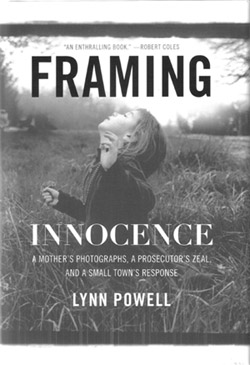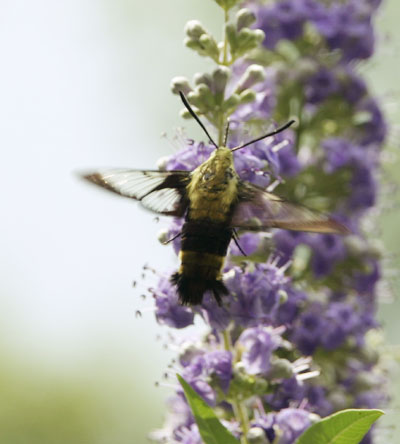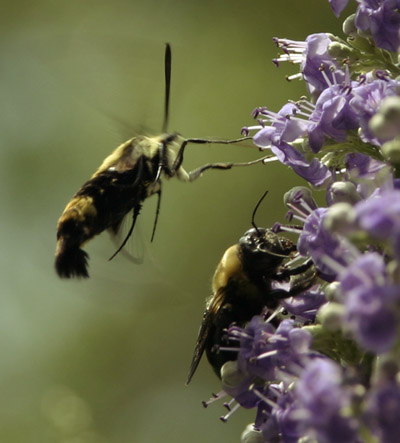There’s a rather interesting effect I’ve been noticing for a while now, and I like it. The popularity of blogs and discussion forums online has taken over where the print articles, editorials, and occasional letter to the editor used to reign. Opinion has now become a much easier thing to express, and a more common thing to encounter.
I can see your eyes widen with incredulity from here – not at the idea that people can express opinions where they couldn’t before, but that I would actually like this. You’re thinking of YouTube, Facebook, and the comments on Cracked.com. So I’ll clarify and say that I’m talking about opinions, not offhand comments, and in forums where discussions actually take place, rather than sniping. I’m talking about mostly blogs, but also the increasing number of online periodicals that are allowing comments. Yes, many of these get their share of insipid, anonymous graffiti (and there’s more than enough to share,) but they also get their share of reasoned, careful posts and rebuttals, and these are something new in the dissemination of information.
What many people never realized, never knew about, was that there’s an undercurrent of misinformation that’s been present for a long time, spread with the intention of maintaining support for a viewpoint. Mostly, this is religious, but there’s other areas that see such tactics, like alternative medicine, alien visitation, and politics. I’ll concentrate on religion for the most part, just recognize that this applies to other topics as well.
Churches and (especially) religious youth groups have been spreading a lot of intentional misinformation for decades now, and actually have coordinated, specific programs, scripts, pamphlets, books, and even children’s videos dedicated to the pursuit. Don’t believe me? Check out the Index to Creationist Claims, a website that addresses the most prevalent cases, or simply Google “Chick Tracts” – seriously, if you’ve never heard of those, look them up, because they’re very popular.
You may want to argue that it isn’t intentional, or perhaps isn’t coordinated. I’ll tell you to look at it closer. Virtually all of these little bits of information have been countered long ago, usually long before you were born, and yet still get used by churches. These are things like, “man descending from monkeys,” “just a theory,” “the Second Law of Thermodynamics,” “how can so many people be wrong,” and “Hitler/Stalin was an atheist.” I’m present on enough discussion groups to see the trends, and know that there’s actually popular approaches at given times – the wielding of the term “scientism” went through a phase last year, punctuating a more common rant against “materialism” – this is the idea that it’s a scientific approach, mind you, and not the psychological concept of gratuitous possessions. I’ve talked about this concept before.
What the discussion forums bring to the table now is the ability to address all of these, usually in detail, and occasionally with the contempt they deserve. The church youth who have been fed these during their adolescent years in a sheltered, controlled environment suddenly come across the distinct reasons why they fail. They’re introduced, sometimes harshly, to the nature of what science really is, and what it has investigated; to what evolution is and how it works; and to logical fallacies that they never realized existed.
Moreover, it happens publicly. Many people who see these arguments don’t bother addressing them, because they feel that “you’ll never convince the devout.” While this is a frightening thought in and of itself – are there that many religious fanatics out there? (yes) – there’s another point which they don’t consider, which is that there’s a certain number of people reading along as well. Let’s face it, you’ll rarely come across a discussion or argument where one party goes, “Wow, you’re right, and I was wrong” – it just doesn’t work that way. The best you can hope for is to plant the doubt and let it grow on its own. But while you’re doing this in a forum, lots of other people who may not be quite as fanatical but have heard the same misinformation are following along.
It’s fairly well known now that church membership, for most denominations, is dropping, while “unassociated” and “atheist/agnostic” populations are rising. And the churches see this too, and have redoubled their efforts to combat this, on occasion rather vehemently – the current pope compared atheists to Nazis, something he apparently felt qualified to speak on from his time in the Hitler Youth. What they’re not realizing, and I get quite a kick out of, is how much they’re throwing their bullshit into stark relief. In mere minutes, gross misinformation is called out, highlighted for what it is, and trashed resoundingly – very publicly. The more such attempts are made, the more the churches are shown to be manipulative, deceitful, and dishonest. Those youth told in their church groups and in handy dandy little pamphlets how physics has so much wrong, or how ancient geology can be explained by the great flood, bring such topics up triumphantly and find out that none of these points is even vaguely supportable. Many of these people, perhaps the sharper thinkers, realize that the church led them astray, fed them lies, and (let’s be blunt about it) tried to brainwash them.
For my part, I love this help! While the pope undoubtedly thought he was shoring up the crumbling walls of catholicism with his atheist/Nazi remarks, what he really accomplished was making even fundamentalists aware of how badly he was grasping. Just mentioning “Nazis” in the same discussion as “catholics” opens that rather nasty door to just how complicit the pope was to Hitler’s programs, and just how religious Hitler actually was. Suddenly, there’s the opportunity to remind people of the anti-semitic background of Europe at the time, and the bare and simple fact that Hitler did not work alone, but with the complicity of millions of catholic and protestant Germans.
So, as someone who espouses critical thinking and careful examination, let me extend my thanks, and my welcome to those arguments! By all means, bring up Darwin’s repenting on his deathbed, and how micro-evolution might be real but macro-evolution isn’t. Stump us all with the avowal that everything must have started somewhere, and how Einstein and Newton believed in god. Come in proudly with that special information your priest or church vouchsafed to you, and be confident, triumphant, and even condescending if you like. It makes for much better reading when you find out the truth.






















































 For some reason, this area is prone to leaf damage, blights or insect infestations or whatever, and finding a few nice, shapely leaves without spots and holes is actually challenging. Anytime from late spring on means I’m often being very selective about what foliage I use as a subject or background, because even out of focus, the subtle message is one of disease or trouble.
For some reason, this area is prone to leaf damage, blights or insect infestations or whatever, and finding a few nice, shapely leaves without spots and holes is actually challenging. Anytime from late spring on means I’m often being very selective about what foliage I use as a subject or background, because even out of focus, the subtle message is one of disease or trouble.
 This is a book that should never have been written, because it details a prosecution that should never have been brought. Very briefly, Cynthia Stewart took photographs of her 8-year-old daughter washing herself in the bathtub and was prosecuted for obscenity.
This is a book that should never have been written, because it details a prosecution that should never have been brought. Very briefly, Cynthia Stewart took photographs of her 8-year-old daughter washing herself in the bathtub and was prosecuted for obscenity.
 Their cousin, the bumblebee moth, or snowberry clearwing (Hemaris diffinis) instead mimics a bumblebee, which makes it possess a different biological trait, too. Both moths are often considered examples of convergent evolution, where the coloration of the moths developed alongside the coloration of the species they resemble, in order to mimic the other species and avoid their own natural predators. In the case of the Bumblebee Moth, however, it can also be called Batesian mimicry, which means a species that develops the aposematic (warning) coloration of a dangerous species while lacking the actual defense of such species. Birds that would feast on the tasty moth avoid it because they mistake it for a bumblebee, which are known as, to use the technical term, “owie hurties.”
Their cousin, the bumblebee moth, or snowberry clearwing (Hemaris diffinis) instead mimics a bumblebee, which makes it possess a different biological trait, too. Both moths are often considered examples of convergent evolution, where the coloration of the moths developed alongside the coloration of the species they resemble, in order to mimic the other species and avoid their own natural predators. In the case of the Bumblebee Moth, however, it can also be called Batesian mimicry, which means a species that develops the aposematic (warning) coloration of a dangerous species while lacking the actual defense of such species. Birds that would feast on the tasty moth avoid it because they mistake it for a bumblebee, which are known as, to use the technical term, “owie hurties.” In order for this to work for our bumblebee mimic, among others, there has to be more of the dangerous species than the mimic, so that the predator is far more likely to encounter the dangerous species first, and learn to avoid that coloration, rather than the tasty moth first and learn nothing. So the population of the mimic species can actually start to lose all benefit of this evolved trait if their numbers get too high in comparison to the species they mimic. They cannot expand outside of the area where that species is found, either, lest they encounter predators that haven’t learned their lesson.
In order for this to work for our bumblebee mimic, among others, there has to be more of the dangerous species than the mimic, so that the predator is far more likely to encounter the dangerous species first, and learn to avoid that coloration, rather than the tasty moth first and learn nothing. So the population of the mimic species can actually start to lose all benefit of this evolved trait if their numbers get too high in comparison to the species they mimic. They cannot expand outside of the area where that species is found, either, lest they encounter predators that haven’t learned their lesson. First off, a small admission: This book jumped ahead in my review lineup because I won it as a prize in a photo competition held by
First off, a small admission: This book jumped ahead in my review lineup because I won it as a prize in a photo competition held by 